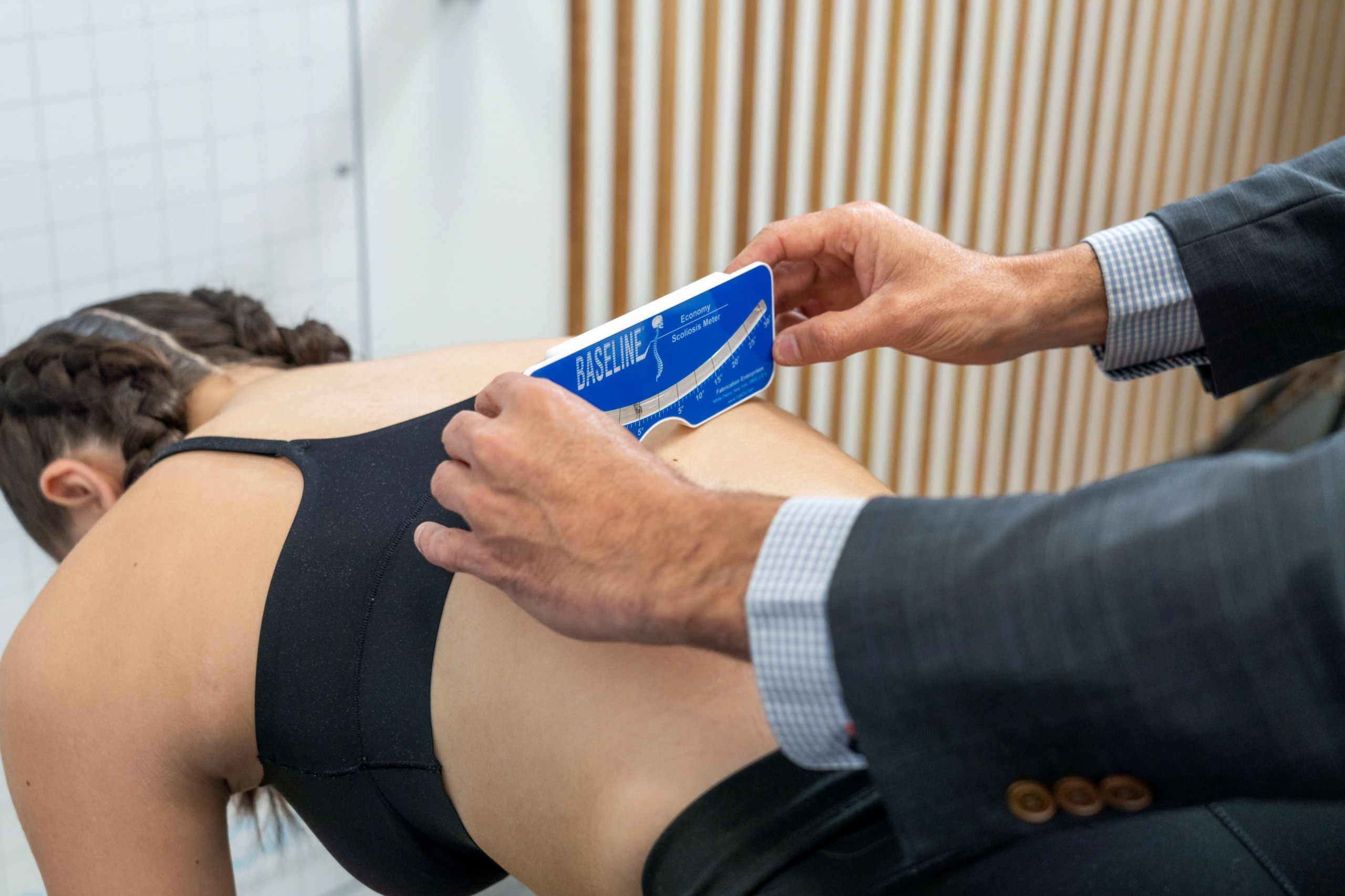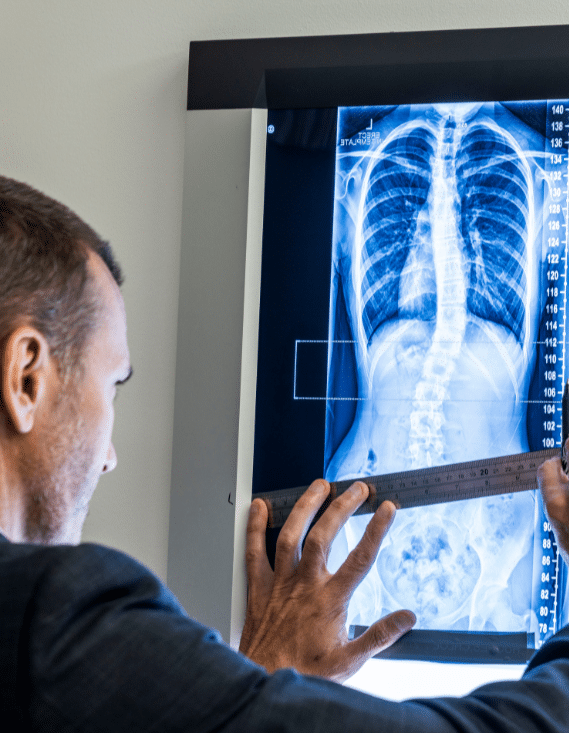Scoliosis Assessment
How is Scoliosis Assessed?
Accurate assessment of a scoliosis or hyperkyphosis case, is a critical first step in achieving the best outcomes for a patient. A thorough assessment, by a dedicated scoliosis clinician, will help in fully understanding the case, and choosing the right treatment path for you, or a loved one.
ScoliCare’s approach to scoliosis treatment is to ensure each curve is accurately assessed from the outset and that we provide appropriate non-surgical treatment options tailored to each patient or recommend surgery if necessary.

Physical Assessment including Posture
Scoliosis and hyperkyphosis can usually be initially detected through physical assessment.
The first signs of scoliosis are often postural, for example, an uneven tilt of the shoulders or one side of the rib cage protruding more than the other. Signs of hyperkyphosis may include a slouch or hunching appearance of the mid back.
A thorough postural assessment by a clinician, including the Adams forward bending test, is usually enough to determine if further assessment is required which normally includes an X-ray.
X-rays and the Cobb Angle
An X-ray is the only way to accurately diagnose and measure a scoliosis (or hyperkyphosis). Only standing X-rays should be used as they show the true degree and alignment of the curve or curves while the patient is upright.
Lying down X-rays are not as useful as the spine can be mispositioned and the true extent of the scoliosis minimized.
Once X-ray images have been taken, a type of measurement called the “Cobb angle” is used to assess the degree of the scoliosis.
It is critical that any health professional assessing scoliosis is familiar and accurate with this measurement as it is then used to form recommendations for treatment options based on the degree of curve.
For children, an X-ray is also fundamental to assess the bone age which gives the clinician useful information regarding future spinal growth and the risk of curve progression.
In older adults, X-rays also play an important role in assessing spinal balance and the presence of any spinal instability.
If you already have X-rays, we can offer a second opinion. Reviewing existing X-rays is a free online service. Note that we review scoliosis and hyperkyphosis X-rays only.


What Scoliosis Measurements Mean
A scoliosis is a curve over 10 degrees “Cobb angle” with visible rotation of the vertebrae. If no rotation is seen on the X-ray, the curve is not a true scoliosis and may be postural or positional.
In part, scoliosis treatment options, and the prognosis of future worsening of the curve, relate back to the size of the curve as measured on an X-ray.
For example, in children when curves are small, ie. less than 20 degrees, scoliosis specific exercises or part-time bracing may be treatment options.
If a curve is larger and measures more than 35 degrees, scoliosis exercises alone are not recommended and full-time scoliosis bracing is nearly always advised as the primary treatment.
In severe cases where curves are greater than 60 degrees, surgery may be the best approach to treatment.
Success Stories
from our Clinics
We’d like to thank our patients for their permission to use their images and results in our case studies. These studies are not to be reproduced without written permission from ScoliCare.

